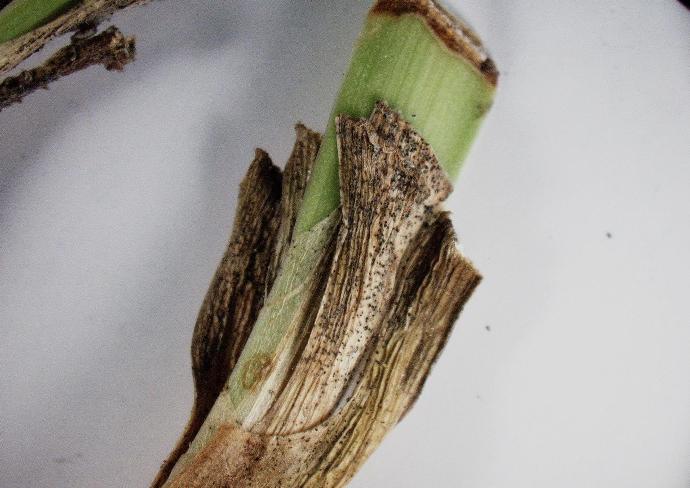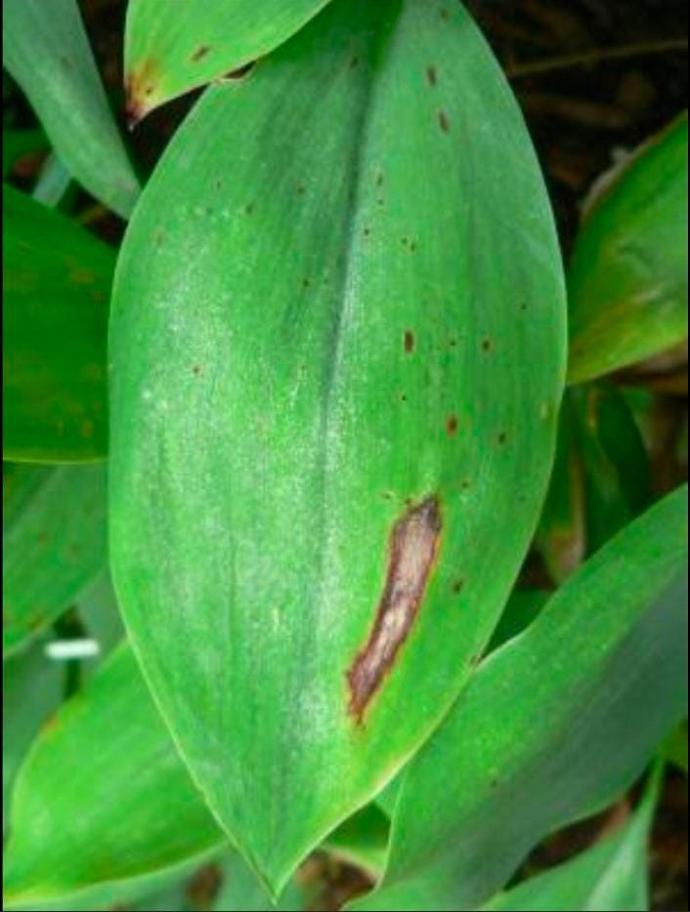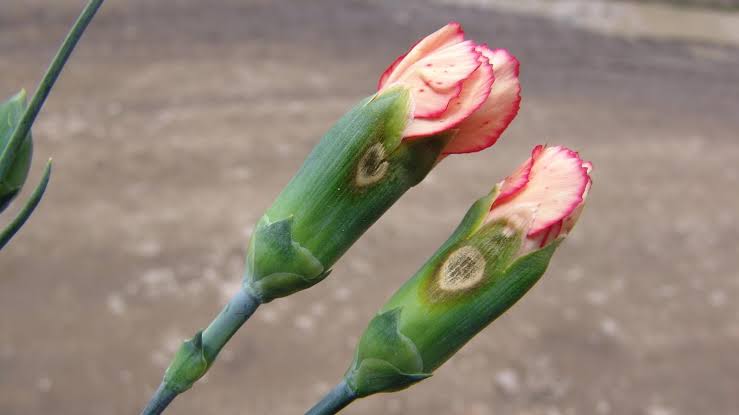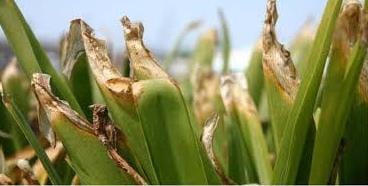Agapanthus Lily Plant
Agapanthus, also known as Lily of the Nile, is a perennial with striking blue or white flower clusters. Plant in well-draining soil with partial to full sun exposure. Water moderately, and fertilize during the growing season for optimal flower production.
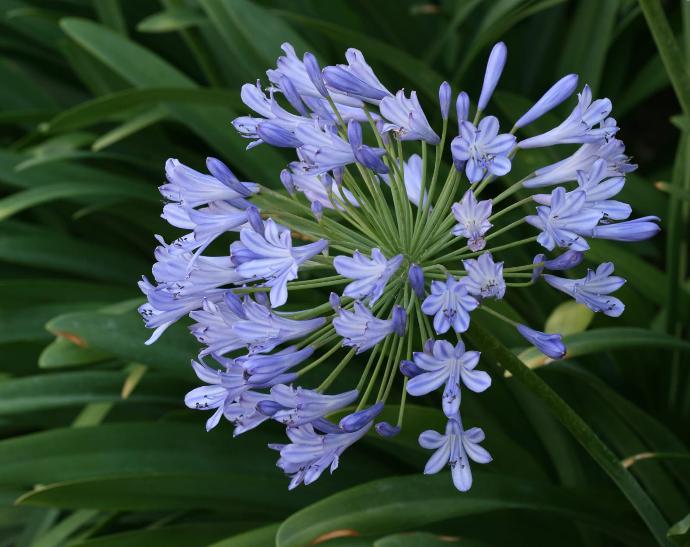
Habit
Perennial
Height
1-4 ft
Growth
Moderate
Soil
Well Drained, Loamy
Shade
Full Sun to partial shade
Moisture
Moist
Edible
No
Medicinal
No
Origin
South Africa
Climatic Condition
Temperate, Humid
Temperature (°)
15-30°C
Humidity (%)
60-85%
Potting media
Cocopeat+Soil
Fertilizers
Balanced NPK(10:10:10)
Watering
Moderate, Keep Moist
Plant Weight
300-600 g
Flowering Time
Summer
Soil Ph level
5.5-7.5
Water Ph level
6.0-7.5
Soil EC
1-2dS/m
Yield Per Plant
Ornamental
NPK ratio
20:20:20
life Span
5-10 yrs
Health Benefits
Suggested Grow Media or Potting Mix ?
40% potting mix, 30% perlite, 30% sand
Suggested Fertigation/Fertilizers
Fertilize every 2-3 weeks with a balanced fertilizer during the growing season.
Common Diseases and Remedies
Anthracnose , Grey Mould.
Brown spots on the leaves that can sometimes have purple edges. Grey mould symptoms start on the leaves.
Remove all of the infected tissue and purge it from your garden.
HEALTH BENEFITS
Agapanthus, also known as the Lily of the Nile or African Lily, is primarily grown as an ornamental plant. While it is admired for its beauty, it is not commonly used for medicinal purposes and can be toxic if ingested. However, in some traditional African medicine, parts of the plant have been used with caution.
Traditional and Alleged Benefits (Not Scientifically Confirmed):
- Pregnancy and Fertility – Some African cultures have used Agapanthus root extracts in traditional remedies for women during pregnancy and childbirth.
- Anti-inflammatory Properties – Some believe Agapanthus may have mild anti-inflammatory effects.
- Heart Health – Traditional medicine suggests it may support heart function, but scientific evidence is lacking.
- Respiratory Support – There are reports of it being used to help with colds, coughs, or breathing issues.
Caution & Toxicity:
- Poisonous if Ingested – The plant contains toxic compounds that can cause nausea, vomiting, and irritation.
- Skin Irritation – The sap may cause allergic reactions or dermatitis.
Since Agapanthus is not a well-researched medicinal plant, it is not recommended for self-medication. If you're looking for plant-based health remedies, consider safer, well-studied options like ginger, turmeric, or aloe vera.
What Is An Agapanthus Lily ?
Agapanthus, commonly known as Lily of the Nile, is a flowering plant native to South Africa. This plant belongs to the Amaryllidaceae family. Agapanthus plants are characterized by ribbon-like leaves and flower-like petals. Depending on the variety, the flowers can be various shades of blue, purple or white. They are often grown in gardens and landscapes for their ornamental value; They add colour and texture to flower beds, borders and containers. Agapanthus plants are low-maintenance and can thrive in many climates, making them the choice of gardeners worldwide.
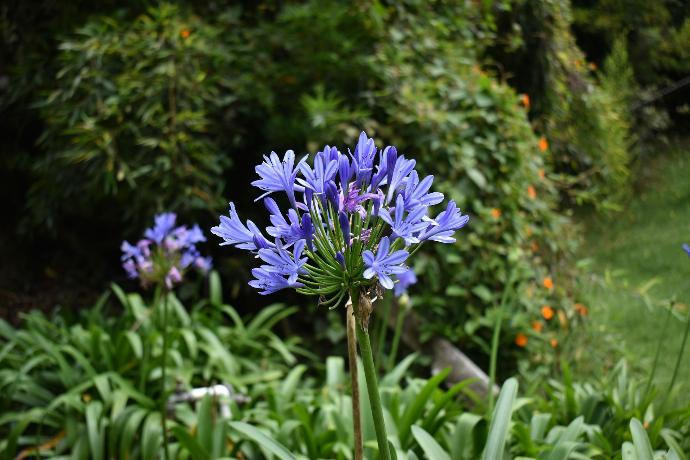
What Are The Different Types Of Agapanthus Lily Plants?
1. Agapanthus africanus
Also known as the African lily, this species is native to South Africa and is one of the most widely grown species. It usually has large, round blue or white flowers on long stems.
2. Agapanthus praecox
This species is native to South Africa and is known for its early flowering, hence the name "praecox". It produces small clusters of blue or white flowers compared to African gerberas.
3. Agapanthus orientalis
Also known as the Oriental Lily of the Nile, this species is native to South Africa and is known for its blue flowers. Its leaves appear wider than other species.
4. Agapanthus
This species is native to South Africa and is characterized by its bell-shaped flowers, which can be blue or white. It has a lower growth rate than other agapanthus.
5. Agapanthus 'Queen Anne'
A hybrid known for its large, pure flowers and long bloom time. It is a popular choice for gardens and landscapes.

How to care for Agapanthus Lily Plants ?
1. Location
Agapanthus plants are often grown outdoors because they need sunlight to grow well and bloom. However, if necessary, it can be grown in containers and brought indoors in cold weather or during the winter months. Here's what you need to know about growing agapanthus indoors and outdoors. Whether growing indoors or outdoors, providing the right growing conditions and care will help your agapanthus plant thrive and produce beautiful flowers.
2. Sunshine
Agapanthus plants generally prefer full sun to partial shade. Ideally, they need at least 6 hours of sunlight a day to thrive and produce lush flowers. In hot climates, providing some shade in the evening can help protect plants from the effects of strong sunlight and heat. However, in cold climates they can benefit from more sunlight to encourage flowering. In general, the goal is to place your agapanthus where it will receive full sunlight while also taking into account factors such as temperature and climate in the area.
3. Soil
Agapanthus plants prefer well-drained soils rich in organic matter. A soil mix that provides good drainage while retaining some moisture is ideal. Here are some tips on the type of soil in which agapanthus plants should grow. By providing the right type of soil, you can help your agapanthus plants have the nutrients and water they need to thrive and produce beautiful flowers.
4. Hydration
Proper irrigation is essential for the health and growth of Agapanthus plants. Here are some tips for proper watering. Use a layer of mulch around the base of the agapanthus plant to help retain moisture and reduce watering frequency. Organic mulches such as bark chips or compost can improve soil structure and fertility. In the fall and winter, when agapanthus plants are dormant, reduce watering and allow the soil to dry out some of the water. Overwatering during the dormant period can cause root rot. If you are planting agapanthus in a container, make sure the pot has a drainage hole to prevent water from pooling. Plant the agapanthus in a container of water when the top soil is dry to the touch.
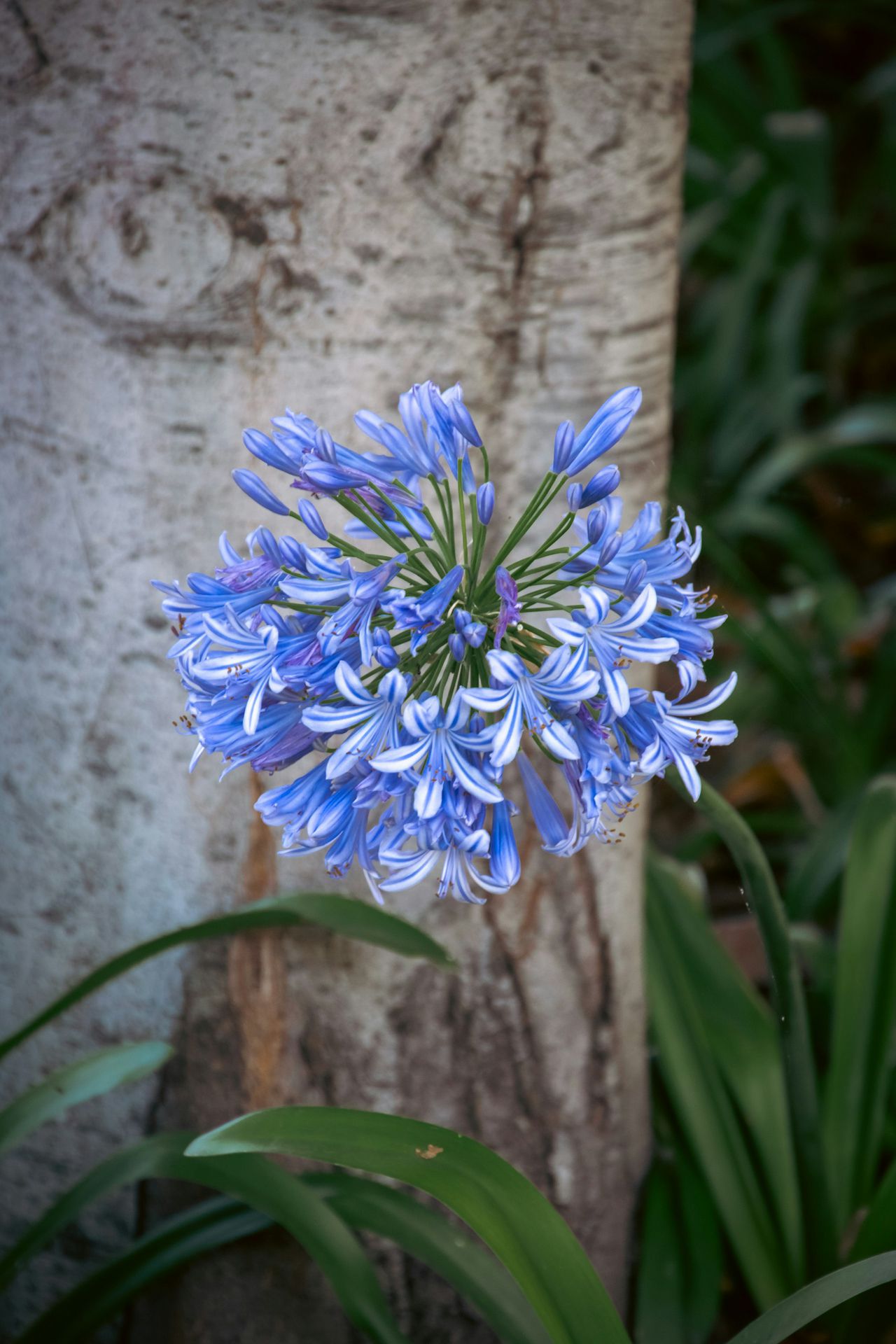
5. Nourishment
It is generally recommended to use a balanced fertilizer containing low to moderate amounts of nitrogen (N), phosphorus (P) and potassium (K) for agapanthus plants. A fertilizer with an NPK ratio of 10-10-10 or similar is suitable. Here's how all nutrients contribute to plant growth and flowering. When fertilizing agapanthus plants, follow the manufacturer's instructions on how much and how much to use. In general, you can fertilize in early spring when new growth begins and in midsummer to encourage blooming. Avoid over-fertilization as this can lead to nutrient deficiencies and damage the plant. Also be sure to water your plants after fertilizing to help distribute nutrients evenly into the soil.
6. Issues
Agapanthus plants are generally low maintenance but can still experience some problems. Here are some problems you may encounter when using agapanthus and how to solve them: Agapanthus plants are susceptible to root rot if the soil is constantly waterlogged. Symptoms include yellowing or wilted leaves, soft stems, and a foul odour. To avoid overwatering, allow the soil to dry out a bit from the water and make sure it is well watered. Conversely, being underwater can cause wilting, yellowing of leaves, and overall poor growth. Check soil moisture regularly and water your plants when the top finger of the soil feels dry to the touch. Give enough water to moisten the root area. Agapanthus plants can attract pests such as aphids, snails and slugs. Aphids can be cleaned with ice water or treated with insecticide. Select snails and slugs carefully or use traps to control them. Additionally, keeping your garden clean and tidy can help reduce pests. Agapanthus plants can be susceptible to fungal diseases such as powdery mildew and root rot, especially if in wet soils or if overwatered. Improve air circulation around plants by spacing plants well and avoiding overhead watering. If a fungal infection occurs, treat with a fungicide according to the instructions on the product. Agapanthus plants will not bloom if they do not receive enough sunlight, are crowded, or do not receive nutrients. Make sure the plant is in a sunny location, divide overcrowded clumps as necessary, and fertilize with a balanced fertilizer to encourage flowering. In cold climates, agapanthus plants are damaged by frost or freezing temperatures. In the fall, protect plants by spreading a layer of mulch around their base to insulate the base. In extreme cases, consider digging up potted plants and overwintering them indoors. You can keep your agapanthus plants healthy and thriving in your garden or landscape by solving problems now and providing proper care.
What are the Benefits of Agapanthus Lily ?
Agapanthus plants have many benefits that make them excellent choices for gardens and landscapes. Some of the main benefits of growing agapanthus include: Agapanthus plants produce beautiful clusters of blue, purple or white flowers that add beautiful colour and visual interest to gardens and landscapes. Attractive vegetation and architectural forms also increase its appeal. Once established, agapanthus plants require low maintenance. They are drought tolerant, deer resistant, and garden suitable in a variety of climates and conditions. With proper care, they can thrive with minimal disruption. Agapanthus plants generally have a long flowering period; The flowers appear in spring or summer and last for weeks to months and depend on many factors. Remove the inflorescences to encourage continuous blooming throughout the season. Agapanthus' nectar-rich flowers attract pollinators such as bees, butterflies and hummingbirds, contributing to the biodiversity of the garden and supporting local ecosystems. Agapanthus plants have root fibers that help stabilize the soil and prevent erosion, making it suitable for cultivation on hillsides or in fields where erosion is prone. Agapanthus flowers add elegance and colour to interiors, creating beautiful blooms for floral arrangements and flowers. Agapanthus plants are easily propagated by division, allowing gardeners to create new plants and expand their gardens. Overall, agapanthus plants offer great beauty, adaptability and easy care, making them a valuable addition to any garden or landscape.

FAQs About Growing Agapanthus Lily Plants ?
1. How to care for Agapanthus?
Caring for Agapanthus plants involves many important tasks to keep them healthy, strong and flowering. Here are some tips for managing agapanthus: Agapanthus plants thrive in full sun to partial shade. Place them where they will receive at least 6 hours of sunlight per day. Provide afternoon shade to prevent sunburn in hot weather. Mulch the base of agapanthus plants to help retain soil moisture, reduce weeds, and control soil temperature. Apply a layer of organic mulch, such as bark chips or compost, to a depth of 2-3 inches. Reapply mulch as needed to maintain its benefits. Every few years, divide crowded agapanthus bushes to rejuvenate the plant and encourage better flowering. Dig up the clump in early spring or late summer, cut it into small sections with a sharp knife or shovel, and replant. Monitor agapanthus plants for pests such as aphids, snails and slugs, as well as fungal diseases such as powdery mildew and root rot. Use appropriate precautions to control pests, such as hand picking or using insecticides, and treat fungal infections with fungicides when necessary. In cold climates, provide winter protection for agapanthus plants by placing a layer of mulch around the base to insulate the roots. In very cold areas, consider digging up potted plants and placing them indoors to survive the winter.
2. What is the use of the Agapanthus plant?
Agapanthus plants have many uses, both practical and decorative, making them a versatile addition to the garden and landscape. Some uses of Agapanthus include: Ornamental garden , Container Gardening , Cut flowers , Erosion Control , Pollinator Gardens , Cultural significance.
3. Can agapanthus grow indoors?
Although Agapanthus plants are usually grown outdoors, they can also be grown indoors when appropriate. Here are some thoughts on growing agapanthus indoors. Agapanthus plants can remain dormant indoors during the winter months, especially if they do not receive adequate sunlight. Reduce watering and stop fertilizing during the dormant period and provide supplemental light as needed. Monitor agapanthus houseplants for pests such as aphids, whiteflies and spider mites, as well as mould diseases such as powdery mildew. Quickly treat pests and diseases to prevent disease and keep plants healthy.
4. Which pot is best for growing agapanthus?
When choosing a pot to grow agapanthus plants at home, it is important to consider many things to ensure the health and growth of the plant. Here are some tips for choosing the best flowers. Choose a pot large enough to accommodate the plant's root system and provide enough room for growth. Agapanthus plants have deep roots and tend to get a little sickly, so choose a pot that's at least 12-16 inches in diameter and depth. When choosing a pot to grow your agapanthus plant indoors, consider these factors to provide your plant with the best growing environment to promote growth and flowering.
5. Where can I buy agapanthus plants?
You can purchase Agapanthus plants from many garden centres, nurseries, and online plant stores. Visit your local garden centre , nursery or grocery store to see if they have agapanthus plants. These areas often feature a variety of indoor and outdoor plants, including agapanthus, especially during the growing season.
